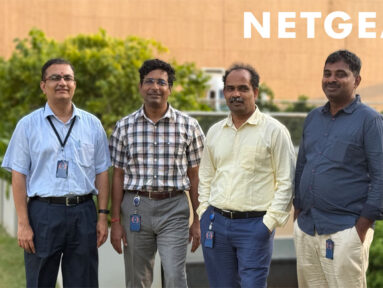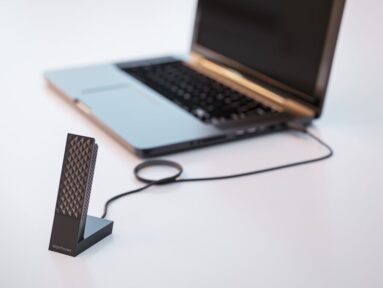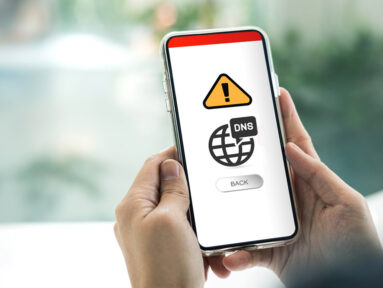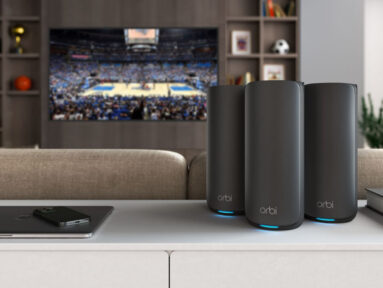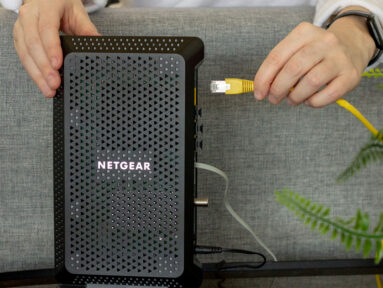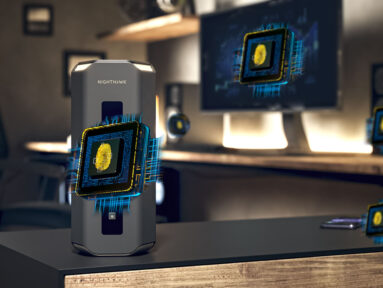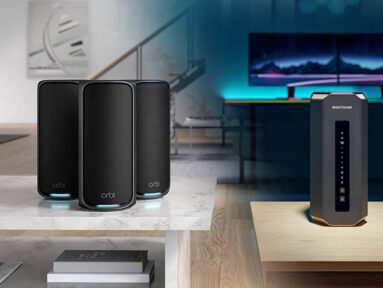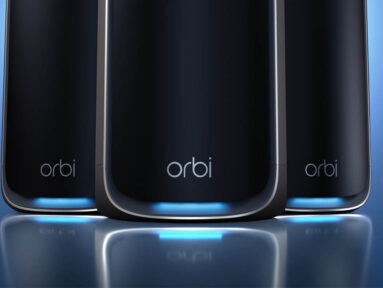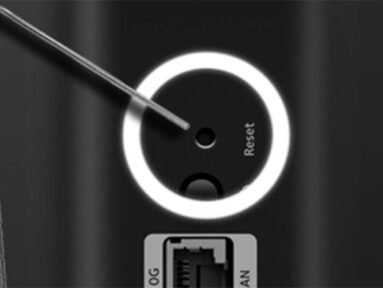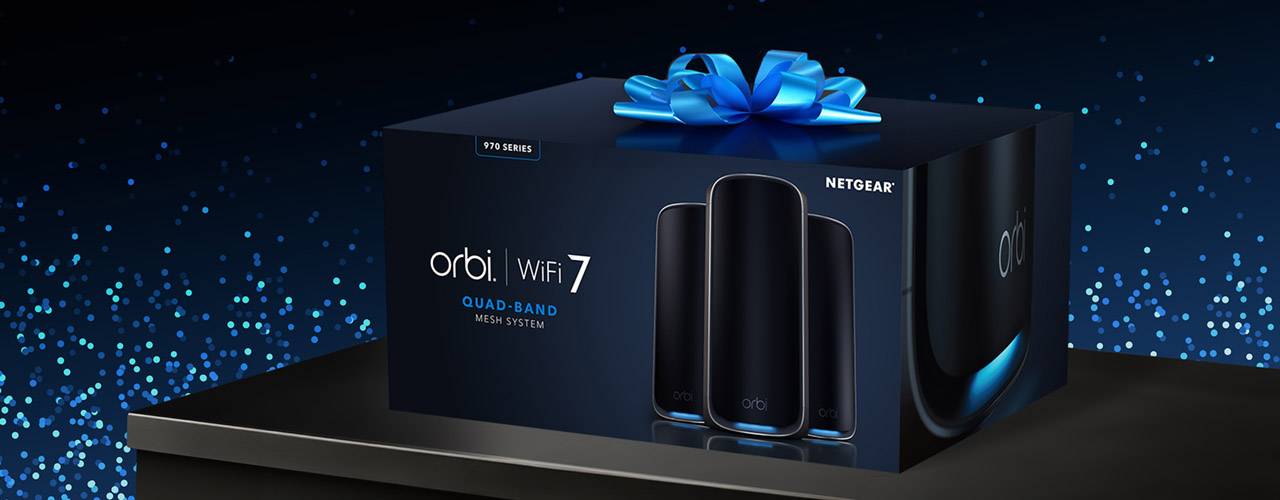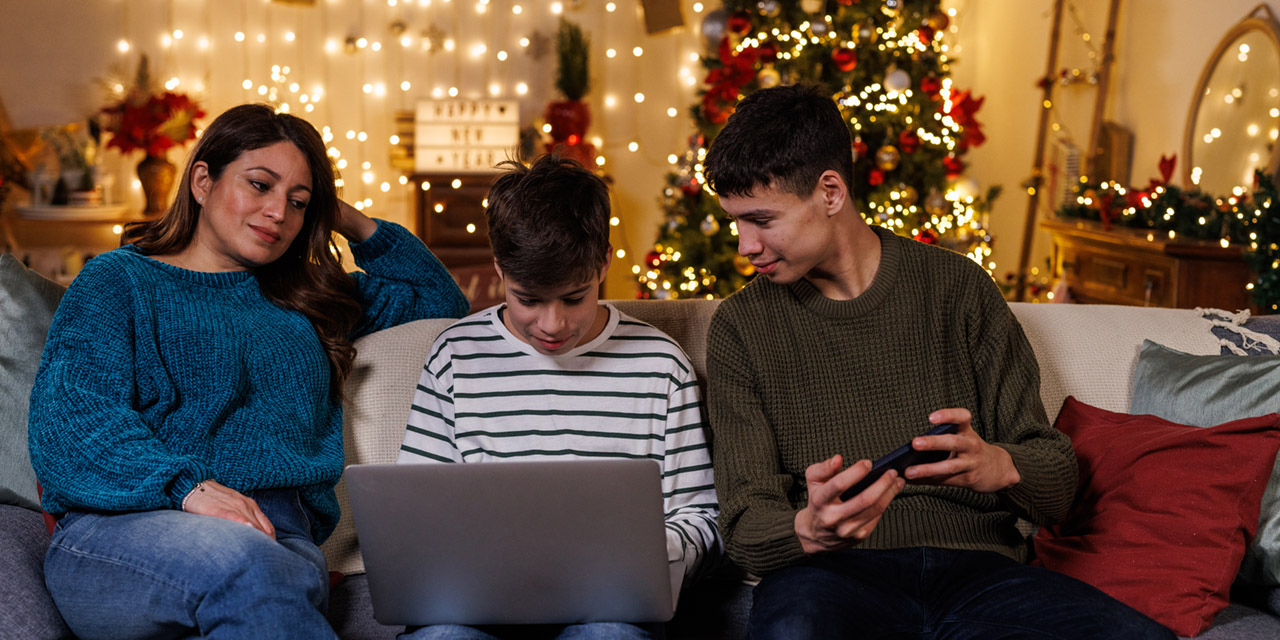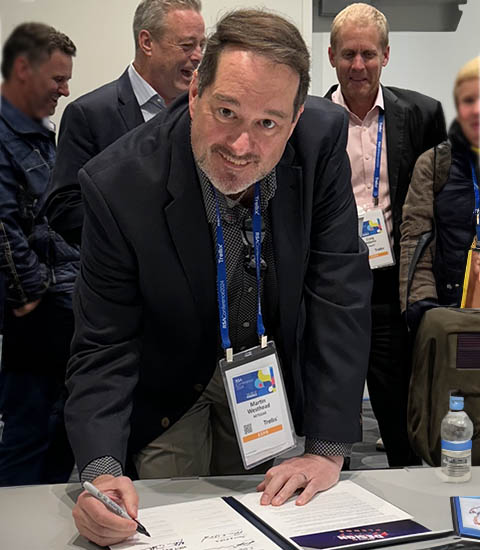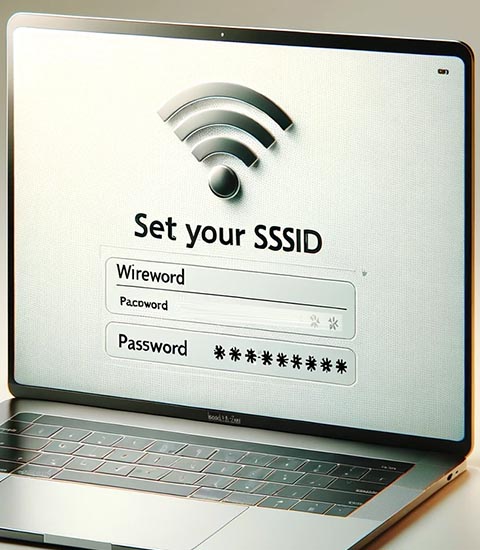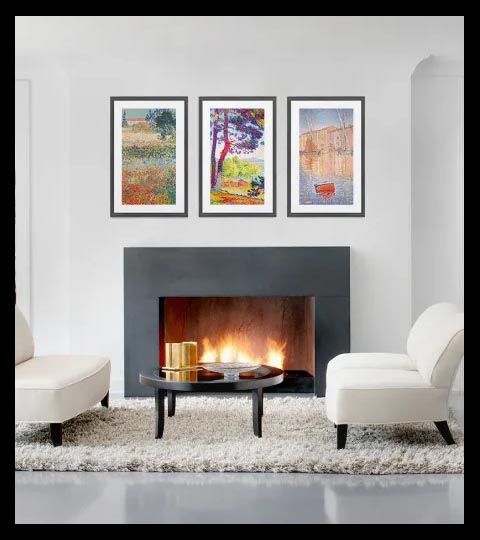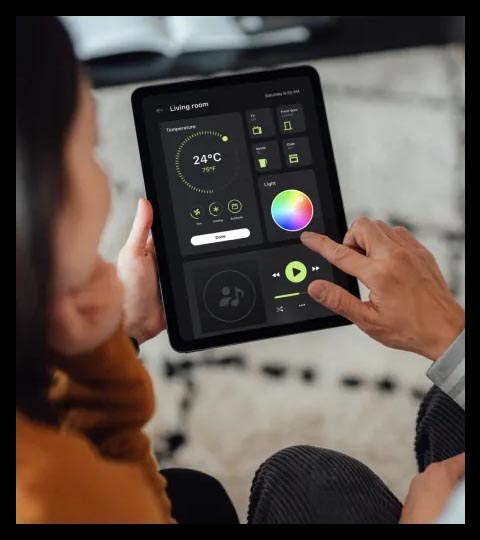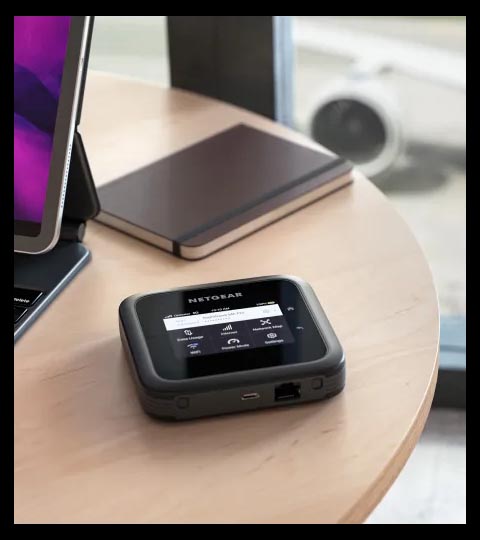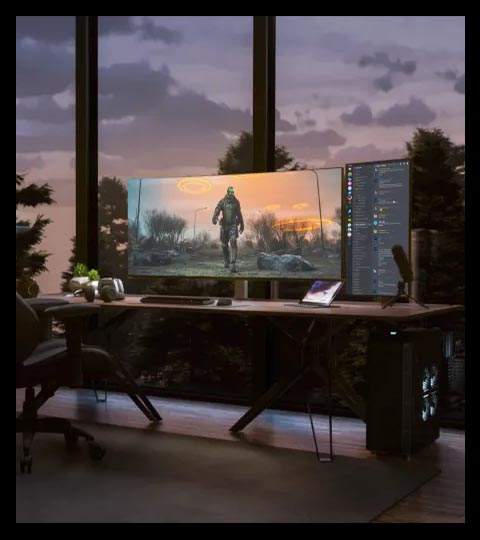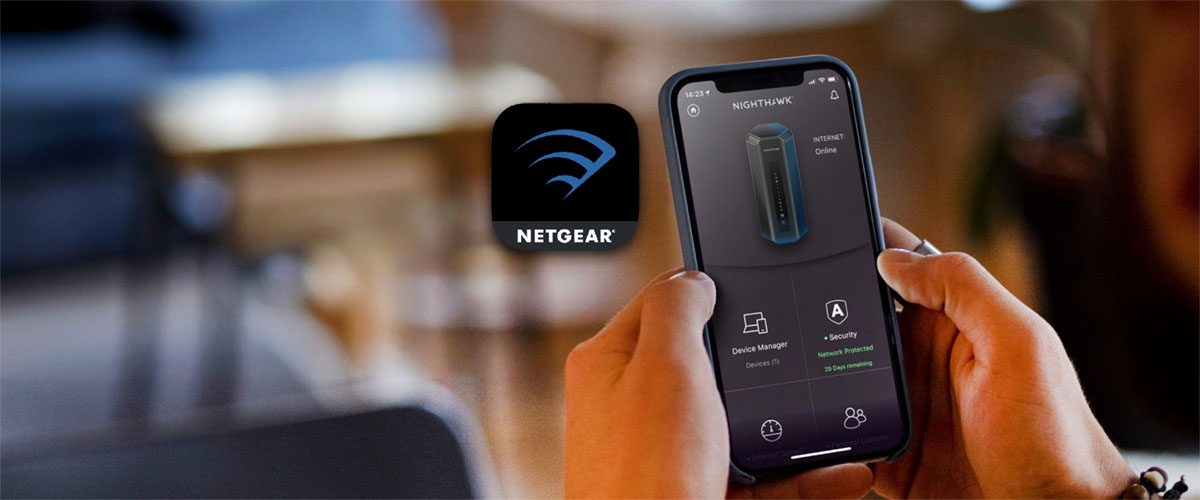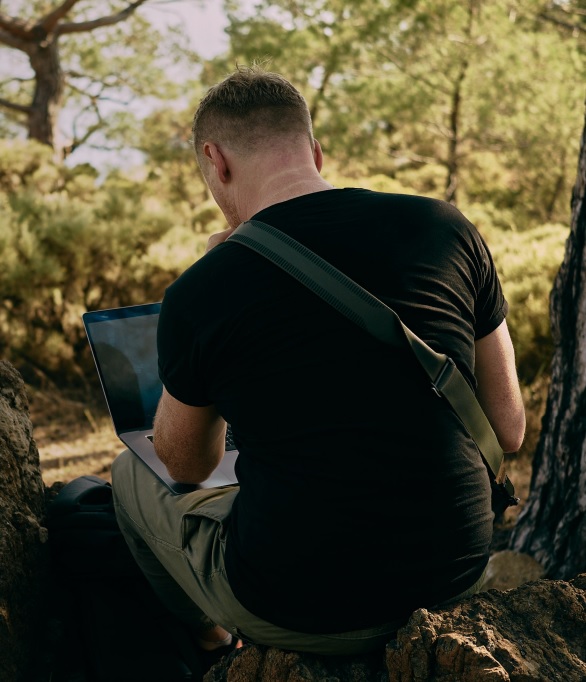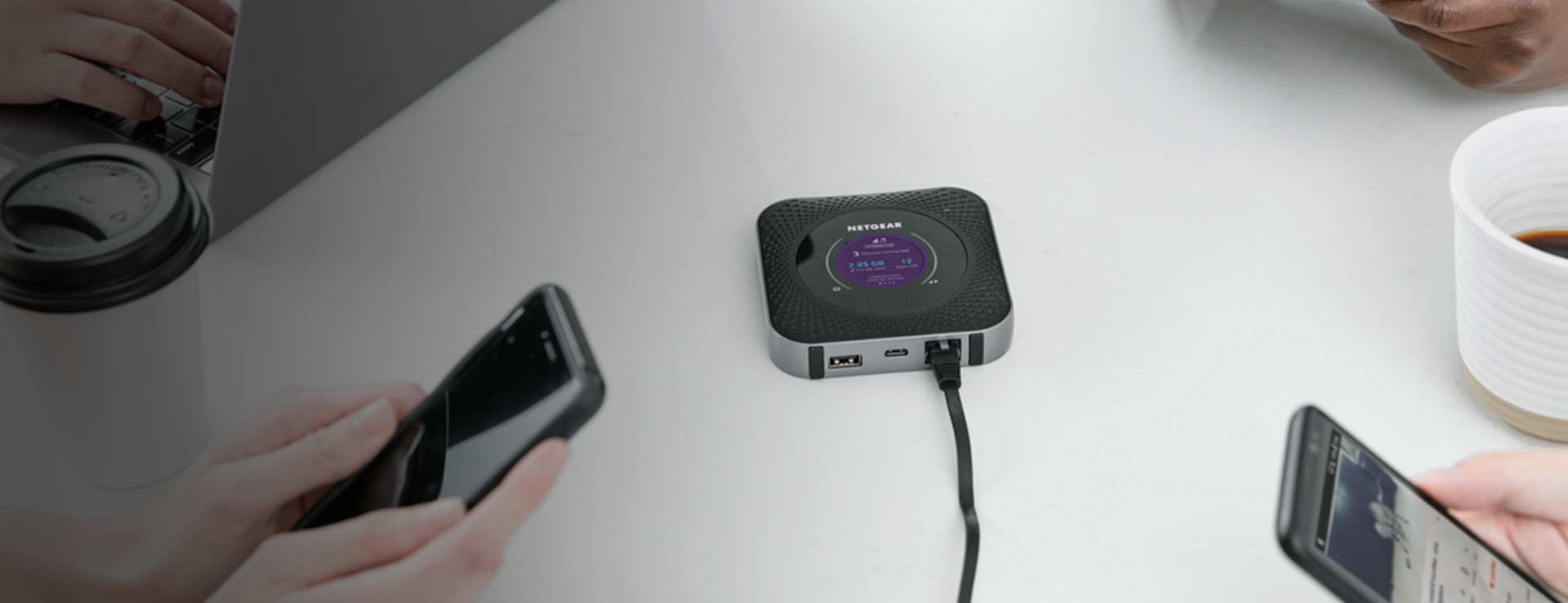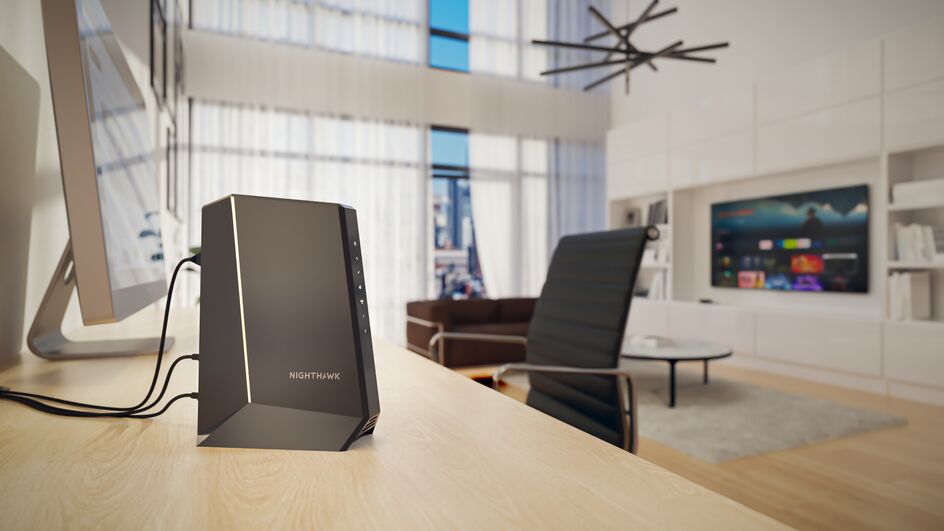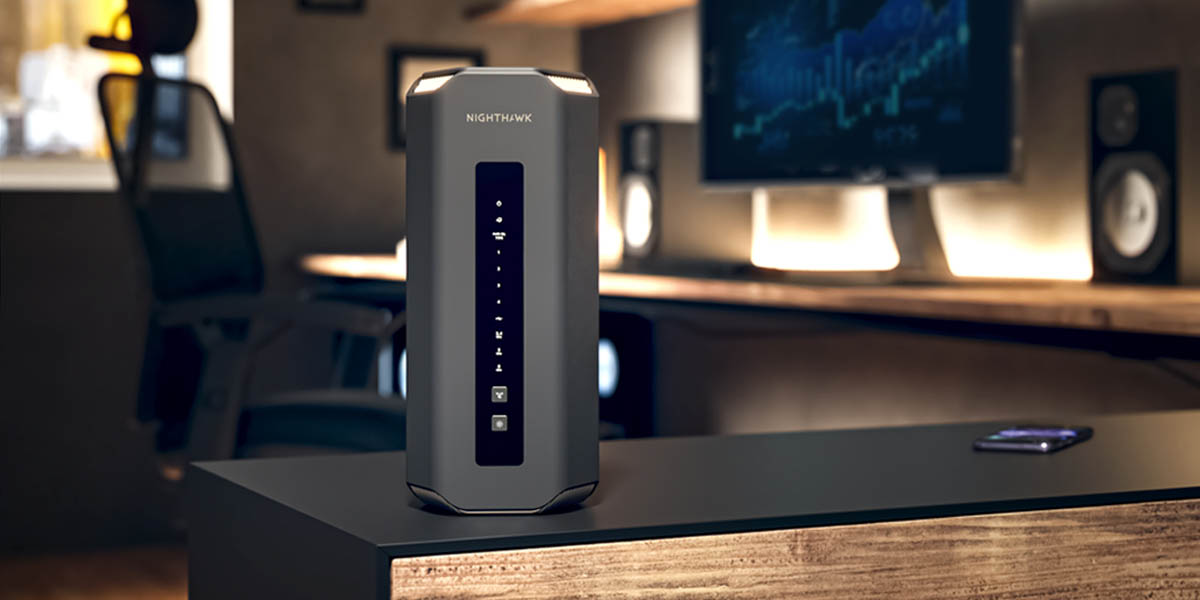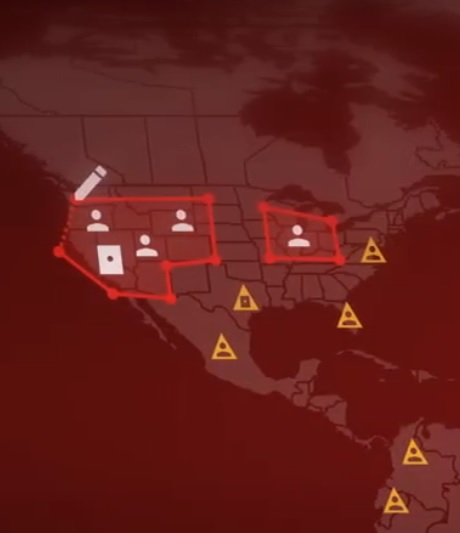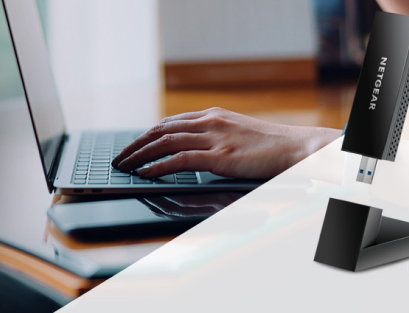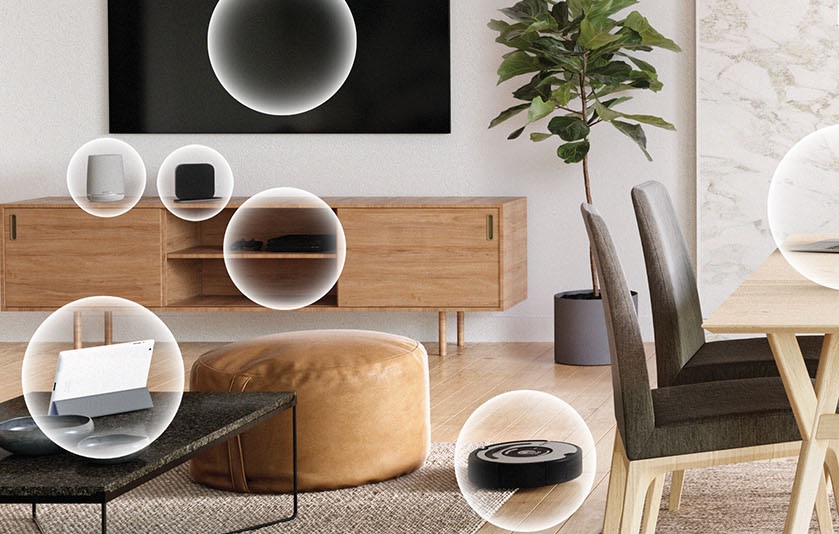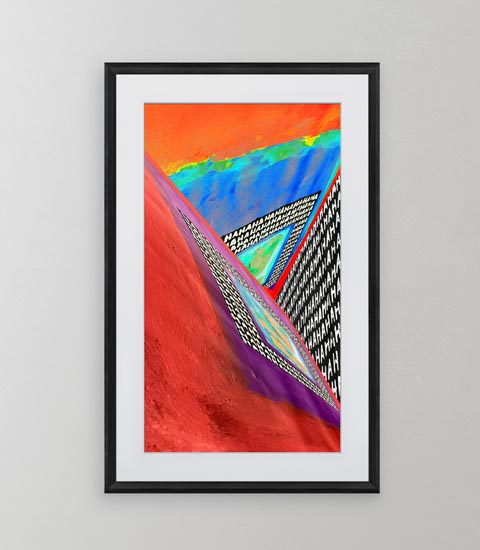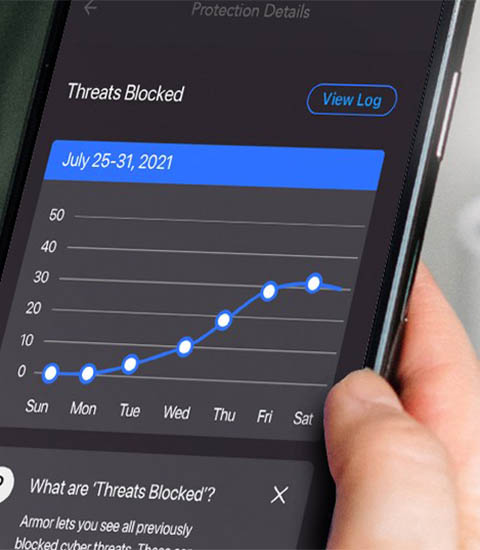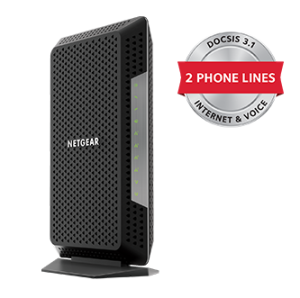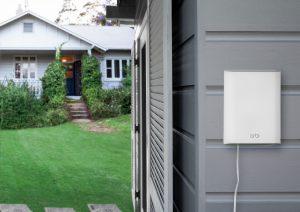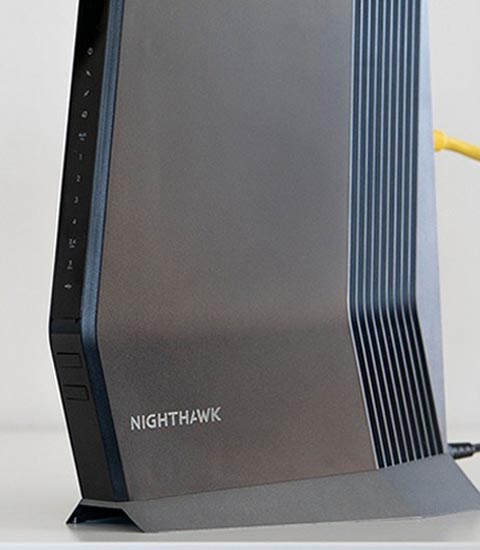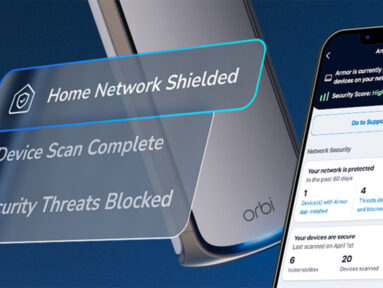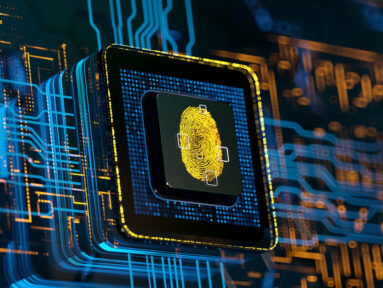Home Networking Articles
Browse our Home Solutions page and find innovative networking solutions for your home. NETGEAR offers cutting-edge products for all your connectivity needs, from routers to mesh systems and more. Upgrade your home network and stay connected with NETGEAR.
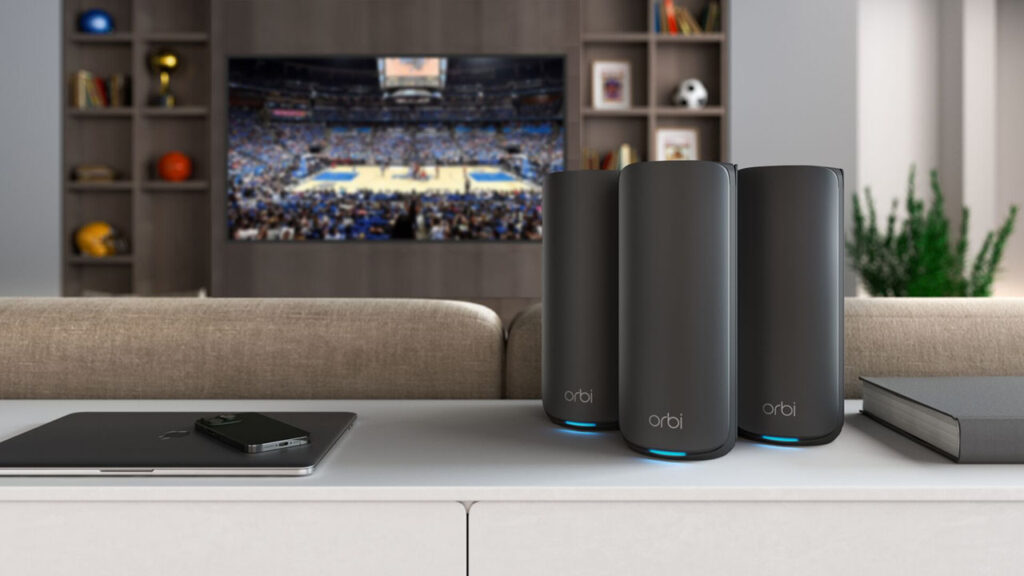
Featured Article
Upgrading Your Home WiFi? Here Are 3 Things You Should Consider
When it comes to choosing a new router or mesh system, don’t settle for anything less than a brand that prioritizes trust, performance, and safeguarding your digital life.
TRENDING in Home Networking
It’s Official: NETGEAR Armor Outperforms TP-Link, eero, and ASUS When It Comes to WiFi Security
In AV-Comparatives' 2024 IoT Router Security Assessment, NETGEAR Armor emerged as the leader in protecting your home network and connected devices.
Consumer Home Cybersecurity Report – Cybersecurity Month
The 2024 NETGEAR Consumer Security Survey found some alarming data points about the impact of cybersecurity on home networks.
Powering Smarter Business Connectivity: NETGEAR Opens New Software Development Center in Chennai
NETGEAR has opened a new software development center in Chennai, India – an investment that reflects our commitment to advancing business connectivity through AI and cloud-based innovation.
Latest in Home Solutions
Nighthawk A9000: Instantly Unleash WiFi 7 Performance on Your PC via USB
The Nighthawk A9000 is a plug-and-play USB 3.0 adapter that brings tri-band WiFi 7 to any compatible PC. This small adapter is extremely powerful, with the ability to instantly upgrade your laptop to WiFi 7
What Is a DNS Error? How Do You Fix It?
You don’t need to be tech-savvy to prevent DNS issues with your internet connection, so here we show you how to deal with DNS problems when they occasionally pop up.
What are WiFi 7 320MHz Channels and How Do They Supercharge Your WiFi?
WiFi 7 includes the new 6GHz band to create ultra-wide bandwidth for faster speeds and less interference. WiFi 7 with 320MHz channels is next-generation networking at its best.
Upgrading Your Home WiFi? Here Are 3 Things You Should Consider
When it comes to choosing a new router or mesh system, don’t settle for anything less than a brand that prioritizes trust, performance, and safeguarding your digital life.
Can You Use Your Own Modem and Router for Home Internet? Yes, Here’s How!
Discover why using your own modem and router gives faster WiFi, better security, and no rental fees. Easy setup tips for any home network.
Seamless WiFi for Multi-Story Homes with NETGEAR’s WiFi 7 Solutions
Transform your multi-story home with fast, reliable, and secure WiFi from NETGEAR Orbi 970 Series. Say goodbye to dead zones and hello to seamless streaming, gaming, and browsing on every floor.
MAC Address: A Guide to Network Identification
MAC Address: A Guide to Network Identification Whether you’re using WiFi or Ethernet, every device on your network needs a unique digital “name tag” so the routers and switches know […]
Best WiFi Routers for Gaming: Experience Lag-Free Performance
Discover the best WiFi 7 gaming routers for low latency, high speeds, and seamless multiplayer gameplay. Get the ultimate gaming experience today!
What Do Orbi Lights Mean?
Learn what Orbi router and satellite LED colors mean, from setup to troubleshooting. Fix connection issues and optimize your WiFi with this simple guide
Which is the Best Router for Apartments?
Find the best router for your apartment with NETGEAR’s WiFi 7 solutions. Enjoy fast speeds, secure connections, and reliable coverage for all your devices.
Home Network Security Blogs
Make your home network security a priority with NETGEAR.
Performing a Factory Reset on a NETGEAR Router
This guide will help you restore your WiFi network and get you back online with a router factory reset and optimal settings.
Is Your WiFi Ready for the Hottest Tech Gifts of the Season? Discover the Must-Have Upgrades!
Discover if your WiFi can handle 2024’s hottest tech gifts. Upgrade now for seamless connectivity with WiFi 7-ready devices and smart home gadgets.
Get Ready for 2025 With the Best WiFi Products
Upgrade for 2025! Discover NETGEAR's top WiFi 7 products for work, gaming, and smart homes this holiday season. Future-proof your network with next-gen WiFi.
Could Upgrading Your WiFi Be the Secret to a Stress-Free Holiday?
Discover these 10 essential tips to ensure you have the best WiFi for a safe, seamless, and connected holiday experience.
Do You Have Too Many Devices on Your Router’s WiFi? Try the WiFi Device Calculator
Discover how many devices you have on your WiFi network. Too many devices can overload and slow older WiFi routers and systems.
Why is my WiFi Slow? Causes and Solutions
Slow internet is unacceptable in our fast-moving world, so let’s look at the causes of sluggish wireless performance, and some practical solutions.
Every 24 Hours, Home Networks See an Average of 10 Attacks. Is Your Network Secure?
Explore key findings from the Bitdefender 2024 Mobile Security Report. Discover trends in scams and how to protect your devices effectively.
NETGEAR Commits to Cybersecurity Excellence by Joining CISA’s Secure by Design Pledge
NETGEAR proudly signed the Cybersecurity and Infrastructure Security Agency's (CISA) Secure by Design Pledge.
Funny WiFi Names: What is an SSID?
SSID is a small canvas for humor, personality, and sometimes, a bit of friendly neighborhood banter.
Best WiFi for Big Households in 2024
Welcome to 21st-century lifestyles with state-of-the-art NETGEAR WiFi technology that takes a leap into the future with the best-ever WiFi mesh systems. With cutting edge WiFi 7 Mesh technology it […]
Gift Guide for Big Households
From hosting parties and streaming marathons to everyday work and play, today’s big, busy households need powerful whole-home WiFi to keep the entire family connected and protected online. That’s where […]
DAVID HENRY RECOGNIZED AS ONE OF THE MOST INFLUENTIAL BLACK CORPORATE DIRECTORS IN THE US BY SAVOY MAGAZINE
Savoy magazine today announced its list of 2021 Most Influential Black Corporate Directors, including NETGEAR’s own David Henry, president and GM of Connected Home Products and Services. The fall issue […]
Manage your WiFi from Anywhere, Anytime, with the Nighthawk App
Your Key to Effortless Home Network Control Your NETGEAR Nighthawk Router is powerful, but getting the most out of it can seem daunting at first. That’s where the NETGEAR Nighthawk […]
NOW AVAILABLE: NETGEAR INSIGHT PRO HELPS BUSINESSES MONITOR AND MANAGE CELLULAR MOBILE HOTSPOTS
Remotely onboard and configure NETGEAR Nighthawk Mobile Hotspots with ongoing remote access, monitoring and management via NETGEAR Insight Pro. NETGEAR today announced the availability of its award-winning remote cloud management […]
Airbnb WiFi – Verify your Internet Speed and Attract more Guests
Discover how to verify and optimize WiFi speeds for your Airbnb rental with NETGEAR's comprehensive guide. Enhance guest satisfaction, ensure reliable connectivity.
Next-Gen 6GHz WiFi 6E AP vs. WiFi 6 AP – Discover WAX630E
The bandwidth and number of clients that wireless access points must support is growing exponentially. With these Wi-Fi requirements increasing day-by-day, hardware must evolve as well to keep up with […]
What You Need to Know Before you Upgrade Your Internet Service
To get the most out of your upgraded Internet service, be sure to read and understand the fine print in your ISP’s plan and evaluate your networking equipment.
NFTs on Meural
NFTs have taken the world by storm, letting collectors and artists alike trade digital works – ranging from art, gaming items, videos, and even memes. NFTs, or Non-Fungible Tokens, are […]
Wireless Router Buyer’s Guide
Summer is soon coming to a close, and it’s time for parents and students to start thinking about Back to School season. Unlike in past years, many students are kicking […]
Meet the Mother of WiFi
Hedy Lamarr’s remarkable journey from Hollywood actress to pioneering inventor serves as an inspiring example of the endless possibilities that lie at the intersection of diverse talents and technological innovation. […]
Introducing the Nighthawk RS700S Tri-band WiFi 7 Router
The launch of our first WiFi 7 offering, the Nighthawk RS700. Not only is this a first for NETGEAR. Explore online today.
WiFi 6E Adapter: Upgrade your PC to 6GHz WiFi
Upgrade your PC to 6GHz WiFi WiFi 6E USB adapters are a recent addition to the world of wireless networking devices. These adapters are designed to provide faster and more […]
Internet Statistics – How are Americans Using the Internet: A New Study From NETGEAR
We all know how critical WiFi is to our lives. It powers everything we love as well as all we need to do to stay productive. We recently commissioned a […]
WiFi 6 Isn’t a big deal… OR IS IT?
WiFi 6 is here, and devices supporting the new standard are starting to hit store shelves, both off- and online. WiFi 6 promises to bring faster speeds and greater capacity… […]
Meural is making even more connections with NFTs
SuperRare NFT Meural: Discover the latest collection of SuperRare NFTs on Meural, featuring digital artwork from today's top artists. Collect and display your favorites!
A Night Out with NETGEAR and NFTs at Non-Fungible Castle | NETGEAR
From October 11–15, 2021, a free exhibition and international conference, called Non-Fungible Castle, was hosted at the Lobkowicz Palace in Prague Castle, Czech Republic. The week-long event was followed by […]
Introducing MetaMask NFT Crypto Wallet on Meural Display
With Meural, displaying your NFTs is easy. Connect your MetaMask wallet and show off your collection with a high-impact digital canvas designed exactly for this kind of use: tech for […]
Connect Coinbase NFT Wallet to Meural Digital Frame
Connect Coinbase NFT Wallet to Meural Digital Frame Catch the cutting-edge frames on the road at NFT LA, Cannes Film Festival, Consensus by CoinDesk and more By now, you’ve no […]
NETGEAR CES 2023 Innovation Awards Honorees
Last night the Consumer Technology Association (CTA)® announced the CES® 2023 Innovation Awards Honorees, including products from both our consumer and business lines. This year’s CES Innovation Awards program received […]
The Nighthawk 5G Mobile Hotspot Pro is Now Available on AT&T’s 5G Network
With many working and learning from home, the need for fast, reliable internet and strong WiFi connectivity is more important than ever. The Nighthawk M5 lets you bring 5G […]
The Vision for the Home Office of the Future – Switched On Thinking Episode 2 with Doug Cheung
The Vision for the Home Office of the Future With home and hybrid working becoming the norm for SMBs, in Episode 2 of Switched On Thinking, NETGEAR’s Product Line Manager […]
Celebrating NETGEAR Executives in Savoy Magazine’s Spring Issue
NETGEAR is honored to have two of our executive team members included in Savoy’s list of the most influential black executives in America. This spring issue is the definitive listing […]
Get the World’s First Retail High-Speed DOCSIS 3.1 Cable Modem with Telephone Jacks
Do you still have a landline? In 2017, approximately 46% of US households still use a telephone that is not a cellphone. We are excited that NETGEAR has now released the […]
Take Your WiFi Outside
Learn How Orbi Can Help Cover Your Outdoor Spaces With Powerful WiFi. Today’s blazing-fast WiFi 7 mesh networks allow you to enjoy seamless connectivity and whole-home coverage upstairs and downstairs, […]
Still Renting Your Cable Modem? Here’s Why You’re Better Off Buying.
Save money and get the WiFi speeds you are paying for. Consider a new Cable Modem with a Mesh System or WiFi Router. You could save you hundreds of dollars over the years.
DOCSIS® 3.1– Blazing Fast Gigabit Speeds NOW!
Earlier this year, NETGEAR released the industry’s first cable modem with DOCSIS 3.1 capability, the CM1000 Ultra-High Speed Cable Modem. Now, NETGEAR leads the industry again with the launch of the […]
NETGEAR Completes Exium Acquisition: Taking a Step Closer to Integrated Networking and Security for SMEs
We’re proud to announce the successful completion of our acquisition of Exium, a cybersecurity company.
Misconfigured Devices a Top Target for IoT Hackers
Your smart home already has a lot going on. The camera on the porch, the NAS humming in a corner, the smart light bulbs, and the fridge that wants a […]
What is NETGEAR Armor?
In a world where everything is online, cyber threats can creep in from almost anywhere—malware, phishing scams, data theft, and more. That’s where NETGEAR Armor steps in.
What is WPA3 Encryption?
WPA3 Encryption is the latest WiFi internet security protocol designed to safeguard your WiFi network. Here, we learn about security encryption and the best routers for supporting the new technology. […]
WireGuard, OpenVPN, and More: A Deep Dive into NETGEAR Armor’s VPN Choices
NETGEAR Armor by Bitdefender integrates a VPN service that offers multiple protocols to accommodate different security, speed, and compatibility needs. Users can choose from Automatic selection, WireGuard, OpenVPN UDP, and […]
Common Home WiFi Threats – And How to Defend Yourself
With NETGEAR’s advanced routers and security-focused systems, you can lock down your digital doorway and keep the bad guys out.



